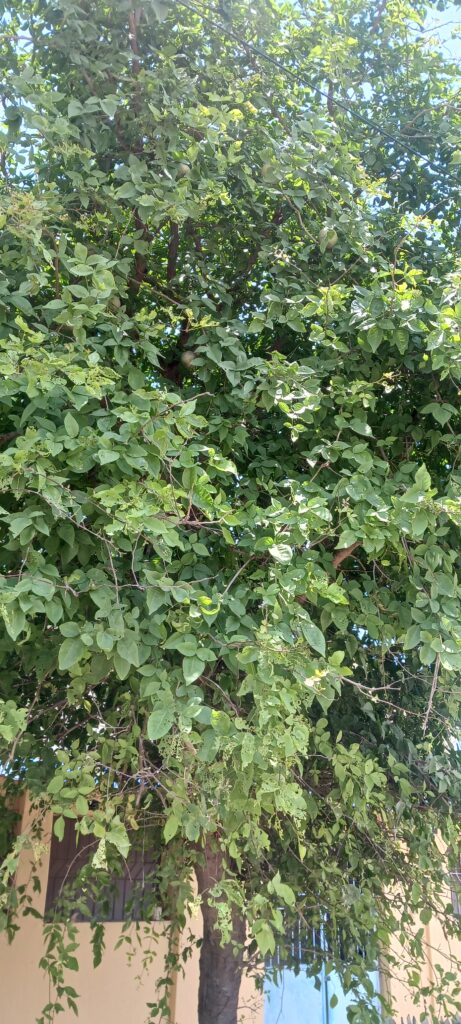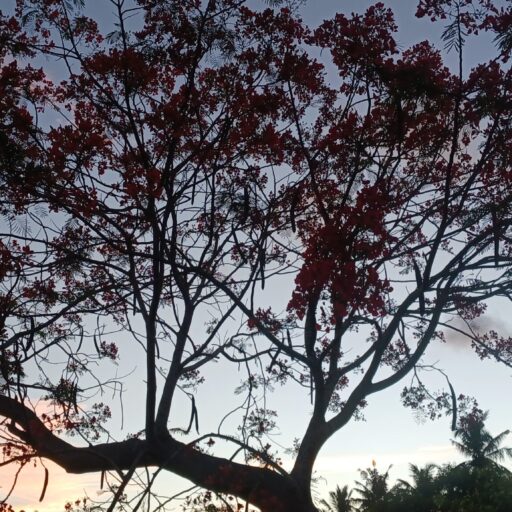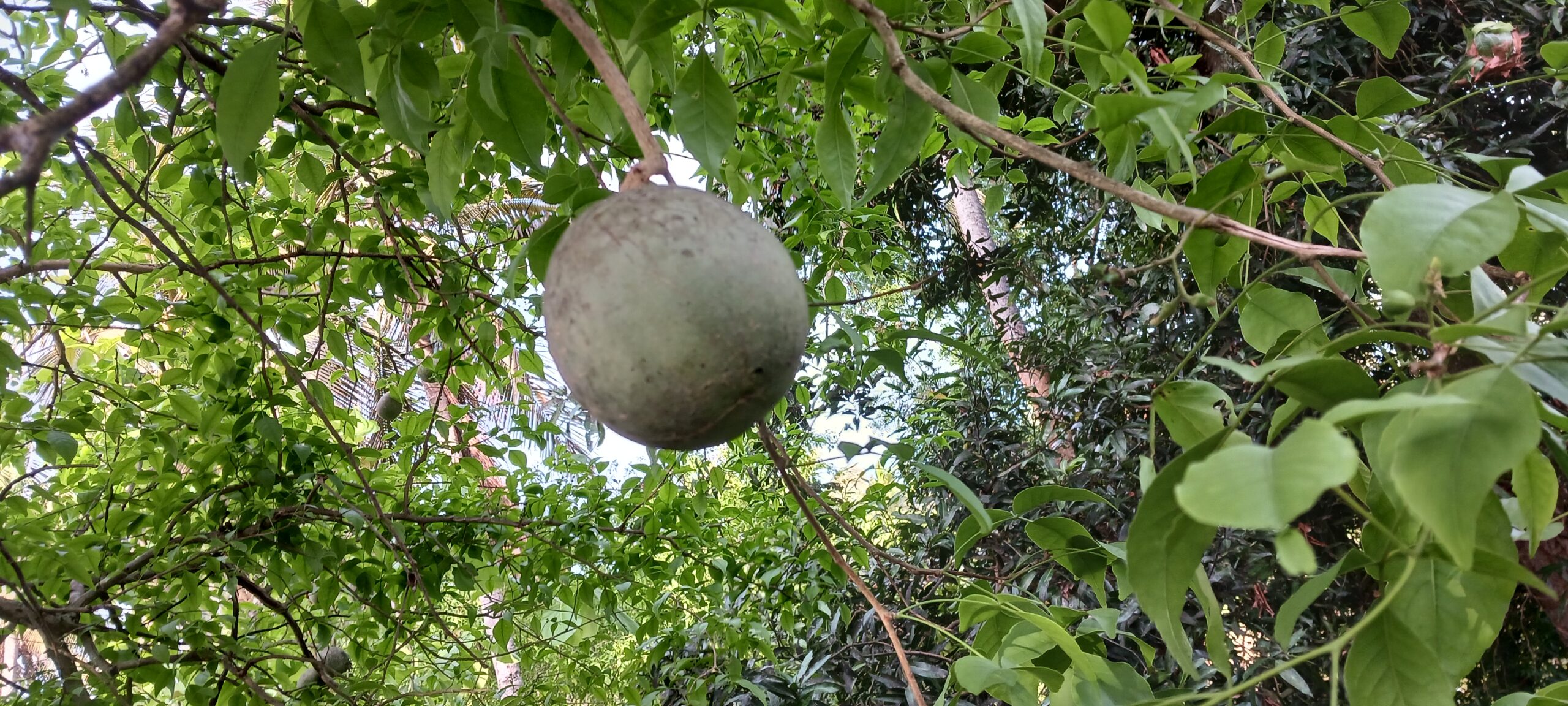Introduction

Bael tree is a medium sized slow growing deciduous tree. It has a short trunk, thick, soft bark that flakes and spreading occasionally 1-2cm spines on older branches with the bottom branches drooping. It is considered as a sacred tree of Hindus. The leaves are offered in prayers. This tree is renowned for its aromatic leaves which are used in religious ceremonies. This herb has great medicinal, spiritual, and religious significance. The tree holds significant sacred value among Hindu due to its versatility.
Native
It is Native to Indian subcontinent and southeast Asia and is cultivated throughout Sri Lanka, Tamil Nadu, Thailand, and Malesia. It has a reputation in India for being able to grow in place that other trees cannot. Forests on hills and Rajasthan is suitable climate for this tree. It is widely cultivated throughout India where the climate supports its growth.
Common Name
It is known as Adhararutha in Sanskrit, Lyalbudi in Tamil, Sriphalamu in Telugu, Bill in Gujarati. Aegle marmelos, Bael, Benjal, Quince, Stone apple, Stone apple Sirphal etc. Bael is also known as Bilva in Sanskrit Language.
Tree height
The trees grows up to 13 to 15mtr. it can attain a height up to 20mtr.
Bark
The bark is pale brown or grayish, smooth, or finely fissured and flaking, armed with long straight spine. The tree’s wood is yellowish white and hard but not durable.
Leave
The leaf is trifoliate, alternate, each leaflet 5-14 ovate with tapering or pointed tips and rounded base. Each leaves have 4-12 pairs of side vein which are joined at the Margin. the color of young leaves is lighter green while older leaves become a darker shade green.
Flower
Bael flower are greenish white in color and sweet scented. The sweet-scented white flowers are borne in panicle cluster and are sometimes used in perfumed. Flowering happening in between March to May.
Fruit
Its fruit are globose, yellowish and haver woody rind. It is very hard woody gray or yellow rind and sweet, thick, orange colored pulp. The fruit are greenish at first, but their color slowly turns to yellow after ripening. The fruit does not split open even upon ripening. The Bael tree starts bearing fruits after 6-8 years and ripen in the dry season when most leaves have been shed in anticipation of bloom for the next crop. Its fruit which are both consumed directly and used traditionally medicine. Choose a pale-yellow, sweet-smelling fruit and try breaking the shell with hard object. The ripening fruit contain aromatic pulp with around 10-15 seeds enclosed sac filled natural adhesive. The unripe fruit sliced and sun dried is traditionally used as a remedy for dysentery and other digestive ailment. The fruit is pyriform to oblong in shape.
Seed
Bale seeds are compressed, oblong and numerous found in aromatic pulp. One Kg of seeds contains around 4000 no of seeds. Fruits ripening during summer (April- May).
Propagation
Beal is readily traditionally propagated by seeds and for propagation through seeds choose any healthy fruit from a matured Bael tree. viability of the seeds is short so seeds should be used soon after collection. Generally, pretreatment is not required for the seeds. The germination period of the seeds is 10-25days. The ideal time for sowing the seeds is from May to July. Germination Percentage may vary depending upon the collection of seeds, as seeds age, fresh seeds have high germination rate is about 55-60%. Seeds should be dibbled in polythene bag having soil, sand, CDM (cow dung manure) mixture of (1:1:1). The proportion may be modified depending upon the nature of the soil. Vermi compost / neem oil cake can be used as manure to an available extent as a substitute to FYM. Soil mixture may be treated with insecticide like Chlorpyriphos to prevent white ant attack. Organic pesticide is more desirable. Mulching is to be provided to facilitate germination. Seeds are normally dibbled at the center of the poly pot so deep that the depth of the soil above it is not more than the diameter of the seed. Regular watering twice a day is to be followed. Shades may be provided depending upon the intensity of the sunlight. Root cutting, grading, resetting of polypot seedling are done in the nursery at regular interval of about 30days. The poly pots are kept in the beds on polythene sheet to prevent root penetration into soil. It is better to use poly bag size 10” x 6” as it is kept for more than one year in the Nursery.
Soil preference
This tree is growing successful in wide range of soil types like sandy, swamy and stony soil that is well draining is favorable for the successful growth of Bael tree. It thrives in alkaline soil with a pH range of 5-10 and grow well in low fertility soil. It is also tolerant of waterlogging and has an unusually wide temperature tolerance from 7-48C.
Pruning
It is advisable not to prune the tree once the tree start fruiting, but you should remove the dead weak and broken branches periodically, especially after the harvesting of fruits. You can maintain its shape by cutting the tips of the main stem at 1-2 mtr height.
Watering
Bael tree require regular watering during initial establishment after that this tree has low water requirement. but in summer and dry season it should be watered twice a week.
Uses
Bael is an Indian medicinal plant with the presence of various bioactive compound that fight against various diseases. The ripen Bael fruits are popular among people because of the delicious fruit pulp. The fruits are usually eaten by locals. It can be made into sharbat, also called as Bela panna a beverage. One of the largest Bael fruit may yield five to six liters of sharbat. Rich in Vitamin C, the fruits can be eaten either fresh from trees or after being dried. Bael and its other plants parts are very significant source of traditional medicine. They strengthen the immune system and fight a variety of infections, diseases and disorders. Bael has various properties, and it might play a role to help with many diseases. Certain compound present in Bael fruit extract might help in the secretion of insulin from the liver thus might be helpful in lowering blood sugar level which control diabetes. These fruits are popular for antioxidant, anti-inflammatory and laxative properties and it has use for its medicinal and therapeutic properties in Ayurveda, siddha and other form of alternate medicine for thousands of years.
In Ayurveda, there is very popular group of herbs known by the term “Dasha Moola”. These ten herbs considered as the best anti-inflammatory and pain-relieving herbs of all times. It is one of the ten herbs mentioned in the group. Bael is known to contain compounds that aid in enhancing liver function and facilitating the removal of toxins from the body.
The fruit gum is used as an adhesive, its gum in combination with equal quantity of jaggary can be taken twice a day against dysentery. The powdered stem bark with honey is given once daily for asthma and jaundice. Some studies within India have shown that its powered leave taken on empty stomach with Luke warm water for 15-30 days can lower blood sugar for people with diabetes.
Fruits are also used in preparation of many medicines in the village. The unripe dried fruit are astringent, digestive, and stomachic and therefore to cure diarrhea and dysentery. The leaves, barks, fruits, and seeds are used in traditional medicine to treat various illness, although there is no clinical evidence that these methods are safe or effective. The seeds of Bael might be helpful to destroy the parasite that cause malaria. Thus, it may act as anti-malaria agent. It was seen that Bael might ever reduce the thyroid hormone level therefore it may be helpful for condition with elevated thyroid level like hypothyroidism. In addition to all its potential health use, Bael might even be good for the environment as it is a member of the plant species group called “climate purifier.” These plants emit more oxygen in the sunlight than the other plants. The Bael plant might also participate in the absorption and neutralization of harmful poisonous gases from the atmosphere.
Toxicity
It is generally considered safe when consumed in moderate amounts, excessive consumption may lead to toxicity.
Pests and Diseases
The Bael tree seems to be relatively free from pests and diseases except for the fungi causing deterioration. to protect from the fungicide, use copper oxychloride or Bordeaux mixture can be applied at regular interval. insect ests like lemon butterflies and citrus can be controlled by removing it through hand picking of pests and their destruction. In severe infestations, insecticidal spray with chemicals like Quinalphos or Chlorpyriphos are recommended.
Classification
Kingdom- Plantae
Class- Magnoliophyta
Family-Rutaceae
Genus-Aegle
Species-A.marmelos

